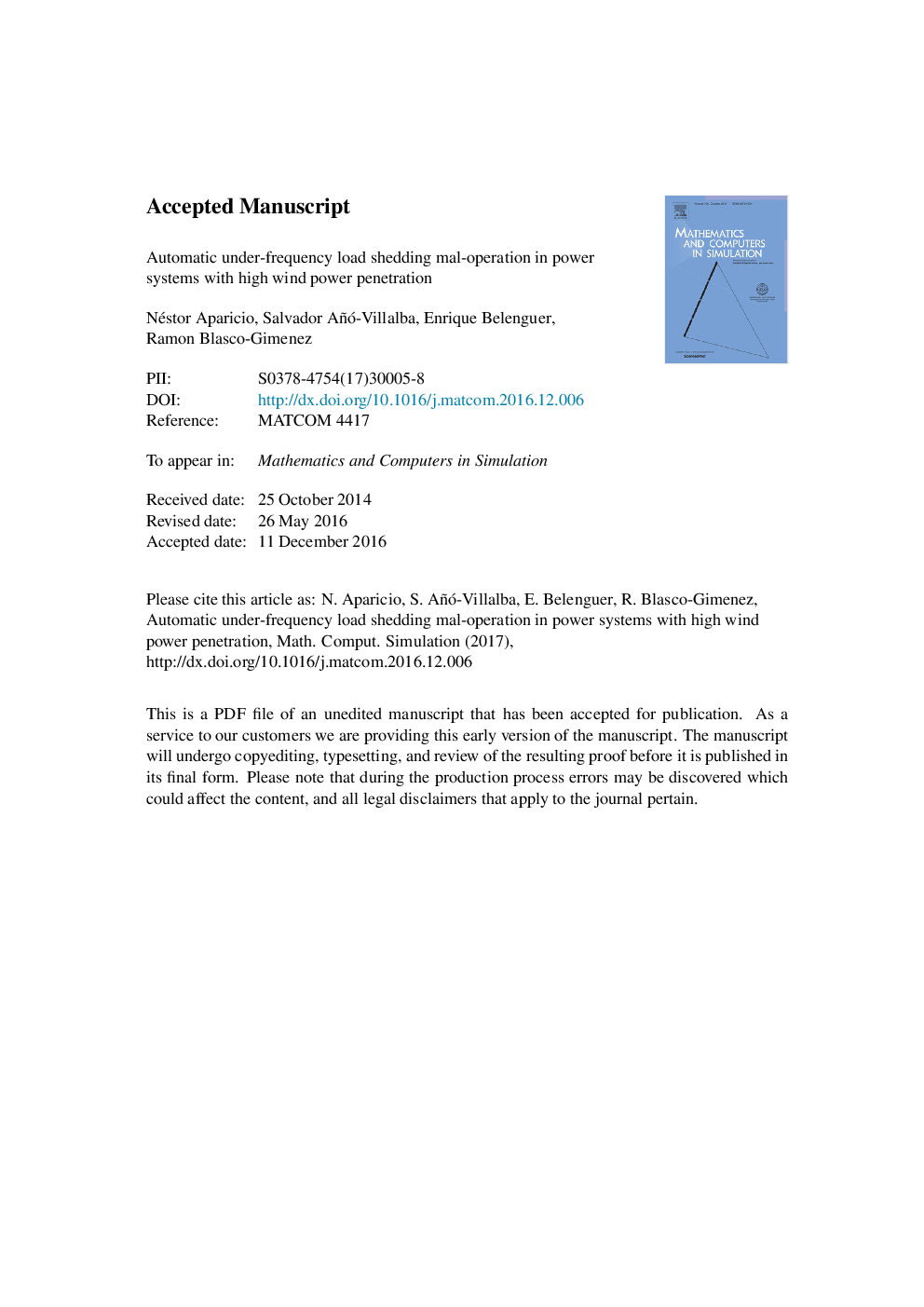| Article ID | Journal | Published Year | Pages | File Type |
|---|---|---|---|---|
| 7543253 | Mathematics and Computers in Simulation | 2018 | 23 Pages |
Abstract
In some scenarios, however, wind energy support may be detrimental to frequency control because it generates an extra energy that reduces decay and derivative but that cannot be maintained over time. These lower values of frequency decay and derivative are currently expected after a reduced incident or when conventional generation, which can maintain the extra generation, provides frequency support, so lead to low or no load shedding. This paper has studied, in particular, the effect of wind generation emulating inertia. A reduction of frequency derivative is achieved, which looks positive at first, but in some cases leads to initial smaller load shedding than the incident requires. A reduced frequency derivative triggers less under-frequency relays as if there were a significant amount of conventional generation that is online. However, this generation has been substituted by wind generation emulating inertia, and as it can maintain extra generation over time, the frequency continues to decay until the shedding of the next load step. As a result there is an excessive frequency deviation and an incorrect load shedding for the magnitude of the initial disturbance. In order to prevent this problem, automatic under frequency load shedding settings may need readjustment when a large amount of wind generation provides frequency support.
Related Topics
Physical Sciences and Engineering
Engineering
Control and Systems Engineering
Authors
Néstor Aparicio, Salvador Añó-Villalba, Enrique Belenguer, Ramon Blasco-Gimenez,
